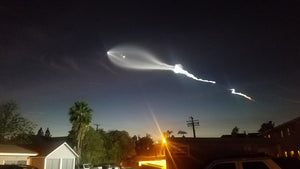April- Total Eclipse, M65&M66, Owl Nebula
Total Solar Eclipse
Hearken, good folk, to a tale profound,
On April's eighth, when the world around
Shall witness a marvel, a celestial sight,
A total eclipse, a wondrous light.
From the south Pacific, its journey shall start,
Over Mexico's coast, it shall impart
Its splendor, its magic, as it ventures forth,
To the lands of the west and the lands of the north.
Through Texas it travels, with grace and with might,
O'er fields and forests, in the day's fading light.
In Arkansas, in Missouri, its shadow shall dance,
A celestial spectacle, a divine romance.
Indiana, Ohio, beneath its dark shroud,
Shall witness its wonder, feel humbled and proud.
From Indianapolis to Buffalo, it shall cast its spell,
A moment of awe, too grand to tell.
And if by chance, in Santa Ana you reside,
Seek ye OC Telescope, where wonders abide.
For there, through lenses of glass and of gold,
The partial eclipse, its story unfolds.
M65 & M66
Two stunning galaxies, M65 and M66, located in Leo, present an impressive sight in the northern night sky, rivaling the famous M81 and M82 pair in Ursa Major. With a pair of binoculars under a dark sky, you can see them as two faint glows, about 20 arcminutes apart, each roughly magnitude 9. Also joining this cosmic spectacle is the fainter edge-on spiral galaxy NGC 3628, situated about 35 arcminutes northeast. Together, they form the renowned Leo Triplet of galaxies. All three galaxies are approximately 35 million light-years away, nestled within the Leo Spur—a gathering of galaxies situated between the Local Group and the Virgo Cluster. What makes this trio particularly captivating is that we view them from different angles, providing us with distinct perspectives to admire their spiral structures.
Owl Nebula
One of the most renowned planetary nebulae in the northern sky is M97, also known as the Owl Nebula. It was first spotted by Pierre Méchain on February 16, 1781, approximately 2.5 degrees southeast of Merak, which is part of the constellation Ursa Major. Méchain remarked that it was difficult to discern with illuminated crosshairs, and Messier agreed, noting its faintness. The challenge lies not so much in its brightness, which is around magnitude 9.8, but in the fact that its dim light is spread across nearly 3.5 arcminutes of the sky. Despite these difficulties, the Owl Nebula remains one of the most sought-after planetary nebulae by observers today. Its allure stems from the challenge it presents: observers are literally invited to see eye-to-eye with this enigmatic celestial object.







